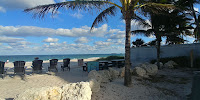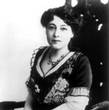 |
| Rodeo in Davie 1991 State of Florida Archives |
By Jane Feehan
Many associate the Broward County town of Davie with its Western
vibe of cowboys, horses and rodeos. But, as with several early South Florida settlements,
farming was its foundation.
Developers and politicians of the first few years of the
20th century touted the possibilities of draining the Everglades for settlement and farming. Governor Napoleon Bonaparte Broward (served 1905-1909)
ran on a platform that included draining the Everglades. * In 1909, he called for the sale of 100,000
acres to finance such a project.
Land sale prospects attracted real estate enthusiasts. Some
say salespeople enticed American workers in the Panama Canal Zone to buy Everglades
property. Panama and South Florida, after
all, were similar in climate and topography. The Canal was not completed until
1914, but some workers bought land unseen and made the move to Florida in 1909-10.
One of the companies to facilitate sales was the Everglades
Land Sale Company, established by Robert Parsell Davie in 1909 who purchased
about 28,000 acres. Davie, a native of Flushing, Michigan, was a successful entrepreneur.
He had opened a drug store in Colorado Springs, financed and was a stockholder
in beet sugar factories and irrigation projects in Colorado, Kansas, and
Arizona and was involved in California real estate.
Davie was impressed by the tall sugar cane he saw growing along
a canal to Lake Okeechobee on an early visit. His experience in sugar
production and particularly irrigation—"a hobby of mine for several years”—would
be applied to Florida efforts.
Farmers in the new settlement they called Zona (a reference to Panama) were also impressed. They grew strawberries, tomatoes and peppers in the rich dark and mucky soil of the Everglades. Davie had created the Davie Farm by 1912 and constructed a $1,700 packing house for fruit and vegetable shipping December 1913 or early 1914. At that time, the town was accessible only by boat. In 1914 an announcement for creation of the Davie Farm Drainage District was published.
It was also the year Davie donated land for a school for the growing community
of a few hundred. The Davie School was designed by August Geiger who also
designed Fort Lauderdale High School. It still stands as part of the town’s
historic district.
The name of the new settlement had to go, however, on “account
of mail trouble arising from the similarity of the names Zona and Ozona” in
Pinellas County. The U.S Assistant Postmaster granted their request to change
the name to Davie Nov. 1, 1913. The name was changed in early 1914 to Davie in
honor of the man who invested much to reclaim the Everglades, donated land for
the school, and established Davie Farm and its drainage district. (Dreams of draining the Everglades faded with the 1926 and 1928 hurricanes.)
The Town of Davie was incorporated in 1925 when there were
440 residents. Frank Stirling was tapped as first mayor. A horticulturalist at the
University of Florida for more than a decade and leader in the fight against citrus
canker, Stirling moved to Davie because “it was far enough south for a tropical
and subtropical climate and the soil was some of the best in the world.” He
owned Stirling and Sons Nursery and helped establish Flamingo Growers and Gardens,
now Flamingo Gardens.
In 2021, the Town of Davie was home to about 104,882 residents.
The U.S. Census counted 110,000 residents in 2020.
An obituary for Robert P. Davie, born in 1867 is not
available. Published accounts say he died around 1930. His wife, Martha Hays
Davie died in Los Angeles County in 1949 and was then referred to as the widow
of Robert Parsell Davie. With so many interests around the country he probably
didn’t reside for long in the Florida town named for him, especially when draining proved to be unfeasible.
About those cowboys and rodeos
The first rodeo in Davie (Cowboy Town) was held in 1940 by
Claude Tindall, a cattle rancher referred to as the “father of Florida rodeo.”
A Davie resident, Tindall used his own livestock and gathered a “collection of
local cowhands” for the inaugural event. Spectators sat in cars around a fenced
area. Afterward, Tindall passed a hat for the production; he collected $140
that day. Tindall went on to hold two rodeos a year in Davie at the Bergeron
Rodeo Arena as well as events in West Palm Beach and at Miami’s Orange Bowl. Today,
rodeos are produced by the Weekley Bros. Davie Pro Rodeo at 4271 Davie Road (954-680-8005).
A Western parade is held as part of the Orange Blossom Festival. Bergeron
Arena at 4201 Rodeo Way holds a number of events other than rodeos for the Town
of Davie.
Cowboys remain along with horses but there are far fewer
farms. Developers now go where angels fear to tread.
*Note: Hamilton Disston sponsored the first Everglades drainage project in 1881. For more, see:
https://janeshistorynook.blogspot.com/2020/09/hamilton-disston-and-early-attempt-to.html
Sources:
The Miami News, Feb. 7, 1912
The Miami News, Feb. 11, 1913
The Miami News, Feb. 14, 1913
The Miami News, Oct. 14, 1913
The Miami News, Dec. 19, 1913
The Miami News, Jan. 16, 1914
The Miami News, Jan. 19, 1914
The Miami News, May 23, 1914
The Miami News, Nov. 29, 1915
The Miami News, July 18, 1916
The Miami Herald, April 10, 1926
The Miami Herald, Feb. 21, 1954
The Miami Herald, July 8, 1979
Fort Lauderdale Magazine, March 1, 2017
Daily Independent, Dec. 23, 2022
Ancestry.com
Town of Davie
https://davieprorodeo.com/dpr/page/2/
Wikipedia
Tags: Broward County history, Davie, Robert Parsell Davie, Cowboy Town, Davie History, Frank Stirling, Davie, Florida, Flamingo Gardens









.jpg)












